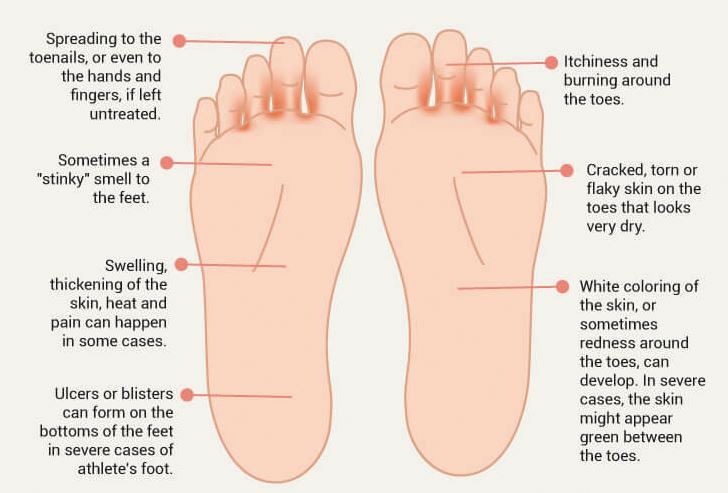Educating and Empowering You to Heal, Thrive, and Live a Happy, Healthy Lifestyle
Natural Remedies for Athlete’s Foot, Nail Fungus and Dry, Cracked Heels

Athlete’s foot, nail fungus and dry, cracked heels are external symptoms of an internal imbalance, not an indication that you need an expensive foot cream or a pedicure. Athlete’s foot, nail fungus and dry, cracked heels are very common problems that can be embarrassing and unsightly, yet easily remedied. Fortunately, there are natural remedies you can start today that will result in smooth, happy, healthy feet.
Signs and Symptoms of Athlete’s Foot
Get rid of Athlete’s Foot, Nail Fungus and Dry, Cracked Heels
Natural Remedies for Happy, Healthy Feet
Use Food as Medicine for Happy, Healthy Feet
- Remove inflammatory foods that feed the fungus and encourage it to thrive and grow (sugar, processed carbs, gluten, dairy, alcohol)
- Shop for and consume organic, grass-fed, pasture-raised foods
- Include healthy fats in your diet such as coconut oil, organic pastured butter, fatty fish (sardines with the bones, wild salmon, mackerel, anchovies, herring), extra virgin olive oil, egg yolks, avocado, sprouted and organic nuts and seeds
- Prevent dehydration! Drink plenty of clean, filtered, fluoride-free water daily (away from mealtime).
Lifestyle Tips for Happy, Healthy Feet
- Dry, cracked heels, nail fungus and athlete’s foot can be linked to Candida overgrowth, yeast, fungal and bacterial infections. This is often the case and the infection must be addressed and treated properly.
- Prioritize attention on optimizing digestion, healing and sealing the gut, and supporting a healthy microbiome.
- Persistent cracking of the skin on the heels indicates a liver and gallbladder system that is congested and sluggish. All fats in the diet require a healthy flow of sufficient bile production from the liver and adequate bile release from the gallbladder to be properly emulsified and digested.
- Dry, cracked heels? Rule out thyroid dysfunction, omega-3 deficiency and iodine deficiency. Eczema, psoriasis, athlete’s foot, thyroid disorders, pre-diabetes and diabetes, and kidney disease can also cause dry, cracked heels. It’s important to identify the root cause.
- Sweaty feet? Rule out kidney problems or magnesium deficiency.
- Numb, burning feet is one of the early signs of diabetes, and a need for B vitamins and lipoic acid.
- Swelling feet or ankles? Watch this short video!
- Dry brush your feet including the bottoms of your feet prior to showering. Use a pumice stone, loofa or soft, dry foot brush every day before showering to gently exfoliate the top layers of dead skin.
- Exfoliate your feet periodically with a mixture of sea salt, baking soda, coconut oil and your favorite essential oil such as frankincense, calendula, tea tree oil, lavender, myrrh. wintergreen or peppermint.
- Do you experience tired, achy feet? Soak them in an Epsom salt foot bath with a few drops of peppermint oil combined with apple cider vinegar, and baking soda to relieve tired, worn feet. Dry thoroughly and afterwards massage feet with coconut oil, olive oil or castor oil and a few drops of peppermint or wintergreen essential oil.
- Topical aloe vera, jojoba oil, neem oil, argan oil and vitamin E also have excellent soothing, healing and moisturizing properties.
- Enjoy a reflexology massage. There are reflex areas on the feet that correspond to every limb, organ and gland of the body. When pressure is applied to these specific points, it stimulates the corresponding limb, organ or gland.
- Loosen tight fascia on the bottom of the foot with self-myofascial release. Stand on a golf ball, Lacrosse ball or an avocado pit as you apply gentle pressure on the tender trigger points on the bottom of your feet to release knots, tight and tangled fascia, and restricted and blocked energy. Especially beneficial for plantar faciitis when done consistently.
- When barefoot, be mindful in public showers, swimming pools or gyms
- Keep your feet and nails groomed. Be aware of nail salons that do not practice proper hygiene and disinfection techniques to avoid bacterial infections.
- Toenail fungus: soak your feet for 15 minutes every day for 4 weeks in an Epsom salt soak of 4 cups hot water, 2 tablespoons bentonite clay, 2 tablespoons Epsom salts and 10 drops tea tree oil. Dry feet thoroughly.
- Before putting on socks, add one half teaspoon of bentonite clay for 3 weeks
- Moisturize your feet. Before bed, rub a mixture of coconut oil, raw shea butter or castor oil (hexane-free), magnesium oil or gel, aloe vera gel and a couple of drops of lavender or myrrh oil into your feet. Wear a pair of light socks. If a fungal infection or athlete’s foot is the root cause, add liquid iodine and tea tree or oregano oil to the mixture.
Home Remedy for Athlete’s Foot and Nail Fungus
Soak your feet every day for 15 minutes
- 1/2 cup raw apple cider vinegar or 1/2 cup hydrogen peroxide
- 1/2 to one cup Epsom salts
- 30-50 drops of liquid iodine
- 4-5 drops tea tree oil and oregano oil
Dry feet thoroughly afterwards. Before bed and again in the morning before putting on socks, dab a few drops of tea tree oil, liquid iodine and colloidal silver onto the infected toenail or fingernail. Also, add some bentonite clay into the sock before putting them on. Continue for 3-6 months or until fungus is no longer present.
Nutrients for Happy, Healthy Feet
- Nutrient deficiencies, specifically essential fatty acid deficiencies, omega-3s and lack of healthy, healing fats in the diet is often the primary culprit of dry, cracked heels. Other common nutrient deficiencies that can also contribute to dry, cracked heels include zinc, vitamin A, and B vitamin deficiencies.
- Calluses can be a result of poor footwear, postural deficits, vitamin A deficiency or a need for thyroid support, especially iodine
- Consider natural antimicrobials and probiotics if Candida overgrowth, athlete’s foot or toenail fungus is the underlying problems.
 Apply the above natural remedies for athlete’s foot, toe nail fungus and dry, cracked heels and in just 5-6 weeks you’ll notice a drastic improvement in the appearance of your heels and feet.
Apply the above natural remedies for athlete’s foot, toe nail fungus and dry, cracked heels and in just 5-6 weeks you’ll notice a drastic improvement in the appearance of your heels and feet.
Related Posts
- Is Candida Affecting Your Health?
- DIY Recipes for Healthy Hair, Skin and Body
- Video: Swollen Feet or Ankles? Watch this video


